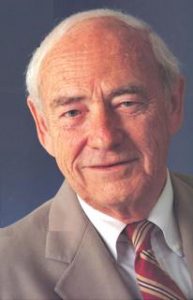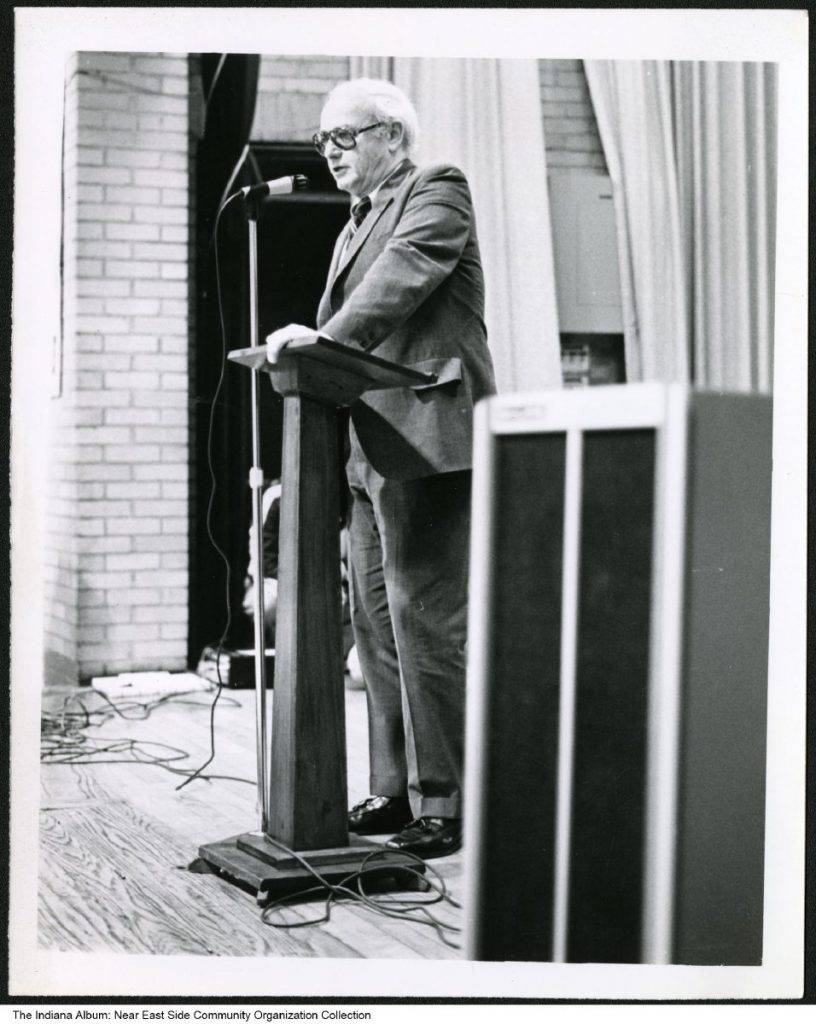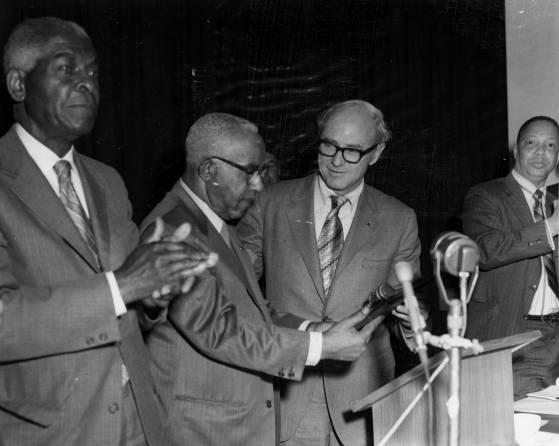
Photo info …
Credit: Ron Moody via Find A GraveView Source
(Apr. 6, 1924-Jan. 14, 1999). Thomas W. Binford played important roles as a civic and civil rights leader and was an important figure in downtown development in Indianapolis during the second half of the 20th century. In addition to being a leading businessman, he worked with many Indianapolis civic organizations, was tied closely to the and the , and worked for education reform.

Binford was raised in Indianapolis and graduated from Park School in 1941. Soon afterward, he was drafted into the U.S. Army to serve in World War II. He spent most of his time fighting in the Philippines during the conflict.
Following the war, Binford returned to Princeton University and graduated in 1948. He came back to Indianapolis after college and joined his father’s family business, Burnet-Binford Lumber Company, and D-A Lubricant. When his father died in 1954, he became president and general manager of D-A, which manufactured industrial lubricants. That same year, he also earned a law degree from Indiana University.
After the sale of D-A in 1975, Binford held a wide variety of important and influential positions. In 1976, he joined Indiana National Corporation () as president and C.E.O. The bank holding company had suffered losses from bad real estate investments during the recession of 1973 to 1975. Binford put the bank back on firm financial footing. Binford also served as a director or chairman for such companies as indianapolis power and light, indianapolis water company, , United Hospital Services, and Heritage Venture Group.
In 1965, Binford was one of the founders of the and served as chairman of the organization twice, from 1965 to 1969 and 1975 to 1967. By the 1970s, he sat simultaneously on the boards of about 20 civic and charitable organizations. Those boards included the United Negro College Fund of Indiana, the Indiana branch of the National Conference of Christians and Jews, the , the , the Indiana Committee of the United States Civil Rights Commission, and the (GIPC).

In addition, Binford supported higher education and education reform. He served as the interim president of DePauw University in 1975-1976 and as a trustee of Rose-Hulman Institute of Technology. Along with , Binford headed a group of Indianapolis executives that formed (CLASS) in 1989. The group was dedicated to improving the quality of education in the city’s public school system.
Binford was passionate about auto racing. Between 1954 and 1958, while president of D-Lubricant Company, he sponsored several Indianapolis 500 cars. Binford joined and others to found the (USAC), which was established when the American Automobile Association pulled out as overseer of auto-racing competition in the United States in 1955. At that point, the had no sanctioning body to set and enforce rules. USAC filled that void. Binford served as USAC’s president from 1956 to 1969. He also was involved in founding in 1960.
After two drivers were killed and 11 spectators were injured at the Indianapolis Motor Speedway in 1973, Binford became chief steward of the 500-mile race. He made several procedural changes and worked to upgrade the track to make the race safer. He continued as Indianapolis 500 chief steward through 1995. At the end of his tenure, he presided over the transition from USAC to the Indy Racing League.
Binford’s interest in sports did not end at racetracks. He also played a key role in keeping the Indiana Pacers in Indianapolis. When the team threatened to leave town and was near bankruptcy, he and six others formed a group to purchase the franchise, and he then served as its president and general manager for the 1975-1976 season. He again was influential in convincing to buy the team in 1983. As chairman of the Indianapolis Chamber of Commerce during Mayor ‘s first term in office, he also was involved in building the , which was essential to the ‘ move to Indianapolis in 1984.
Binford was known for being very inclusive and was one of the most trusted city leaders of his day. According to people who worked with him, he did “everything with grace and dignity” and not only sat on community boards, including serving as chair of the advisory board for the Encyclopedia of Indianapolis (1994), but “worked in the trenches with everybody, rich and poor, minority and majority, men and women.” He is buried at , and Binford Boulevard on the northeast side of Indianapolis is named in his honor.

Help improve this entry
Contribute information, offer corrections, suggest images.
You can also recommend new entries related to this topic.

